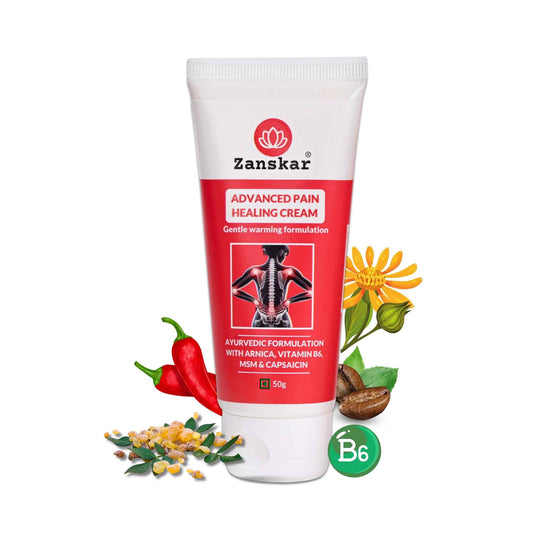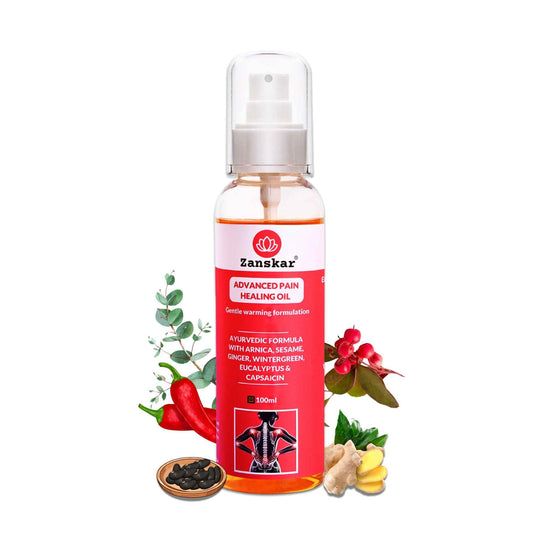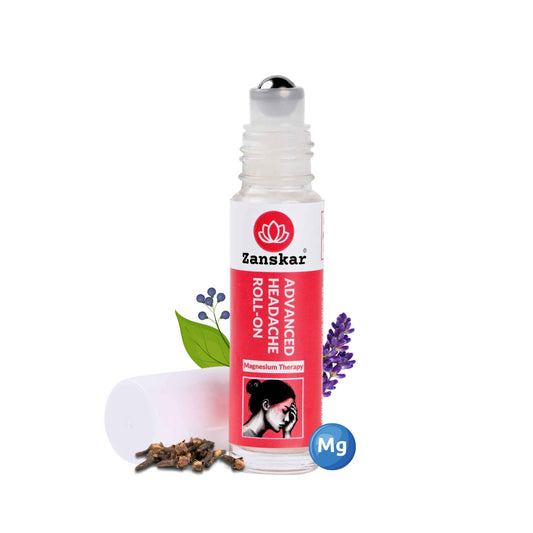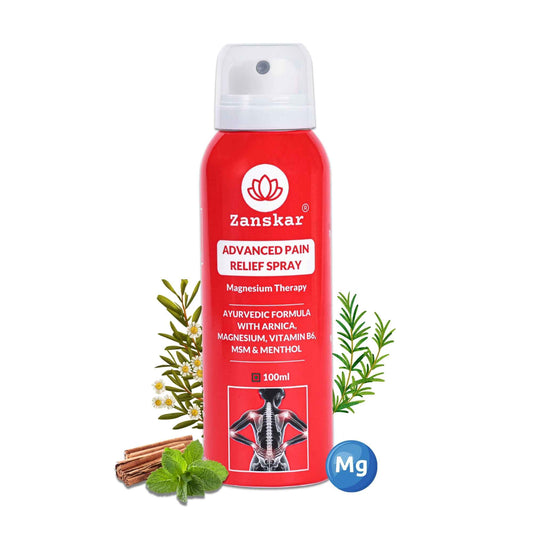
Swimmer's Shoulder: Symptoms, Causes, and Best Exercises
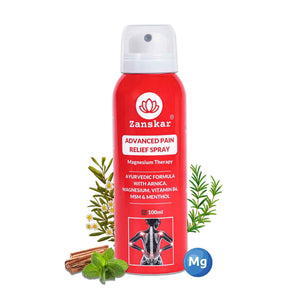
If you’ve been having a tough time lifting your arm over your head, you might have a condition known as swimmer’s shoulder. And while, yes, the condition can commonly occur among swimmers, it’s actually a broad term for several conditions that can cause shoulder pain and weakness. It can happen due to repetitive movements involving the shoulder, including swimming, throwing, or frequently reaching overhead.
Anyone can experience swimmer's shoulder, even people who never go swimming. The condition can be uncomfortable and interfere with everyday movements like reaching in a high kitchen cabinet or washing your hair. Fortunately, swimmer’s shoulder usually gets better over time with conservative interventions, especially with exercises that strengthen the shoulder muscles.
Read on to learn more about what causes swimmer’s shoulder, along with how to prevent and treat it — especially with exercises recommended by our Zanskar Health physical therapists.
What Is Swimmer’s Shoulder?
Swimmer’s shoulder is a catch-all term for shoulder pain that occurs with overhead movements, says Sarah Kellen, PT, DPT, a physical therapist at Zanskar Health. It occurs when muscles or tendons in the shoulder become irritated, which can limit mobility. “We commonly see it in swimmers, but it can happen to people who play other sports or have a job with repetitive arm movements,” she says.
Swimmer’s shoulder can stem from a variety of causes, including direct injuries to the shoulder or other conditions, like tendinitis, that result from repetitive motion or overuse.
Symptoms of Swimmer’s Shoulder
Swimmer’s shoulder, while very treatable, can be uncomfortable and interfere with day-to-day activities. The most common symptoms of swimmer’s shoulder include:
- Pain when you lift your arm higher than your shoulder
- Limited range of motion when you lift your arm overhead
- Pain in your upper arm
While swimmer’s shoulder can cause pain and weakness in the front part of your shoulder and upper arm, our PT expert notes it usually doesn’t result in numbness or tingling down the arm.

Common Causes of Swimmer’s Shoulder
“When the arm is going overhead, the space at the top of the shoulder can narrow, which can cause irritation with movement,” says a physical therapist at Zanskar Health
While repetitive movements are a typical source of pain, it’s important to note that repetitive movements aren’t inherently bad. If you develop swimmer's shoulder, it may just be a sign that your body needs more stretching or strengthening to tolerate those repetitive activities better.
Common types of swimmer’s shoulder, or potential problems often associated with swimmer’s shoulder, include:
- Rotator cuff tendinitis. You may experience swimmer’s shoulder when the tendons around your rotator cuff, the tissues that support your shoulder joint, become inflamed and irritated.
- Shoulder impingement syndrome. Swimmer’s shoulder can also occur when your scapula (shoulder blade) pinches your rotator cuff. This is known as shoulder impingement.
- Labral tears. Your shoulder labrum is cartilage that helps stabilize your shoulder joint. When this area is injured, you might have difficulty with overhead movements.
- Biceps tendinitis. The tendons that connect your biceps muscles to your shoulder can become inflamed and cause pain and limited range of motion in your shoulder.
- Muscle strain. Muscle strains happen when a part of your muscle over-stretches or tears. This commonly occurs when your muscles engage in activity they aren’t prepared for, like jumping into a pickup basketball game without warming up properly. A muscle strain in your shoulder can cause swimmer’s shoulder symptoms.
Treatment Options for Swimmer’s Shoulder
Swimmer’s shoulder can cause pain that makes normal daily movements more difficult. But our expert says most cases resolve on their own with time. In the meantime, you can take a few simple steps to reduce pain and improve your shoulder function.
- Heat or ice. Applying heat can help warm up your shoulder muscles for movement, while ice can calm swelling and inflammation that makes it hard to move. Either ice or heat therapy can be useful for swimmer’s shoulder, as long as it feels good.
- Over-the-counter (OTC) medication. Consider using the Zanskar active pain relief spray for pain stemming from swimmer’s shoulder. With an athlete grade cryotherapy formulation of magnesium + menthol, it can help with calming the internal inflammation.
- Activity modifications. Complete rest isn’t recommended for swimmer’s shoulder. It’s important to keep your shoulder joint mobile. That said, you can adjust your routines to prevent shoulder pain as you strengthen the area and heal. This may mean limiting some overhead movements until you build more strength.
The most helpful way to improve swimmer’s shoulder symptoms, says Zanskar PT expert, is exercise. “We want to strengthen the specific muscles around your shoulder to help prepare you for activity, so you can move without limitations or pain,” she says.
Exercises to Help Relieve Pain from Swimmer’s Shoulder
Strengthening the muscles around your shoulder will likely be the crux of your exercise routine if you have swimmer’s shoulder symptoms. Our expert says stretching exercises can also be helpful. “With swimmer's shoulder, you can develop tightness in areas of the shoulder, so regular stretching can help increase range of motion and decrease pain, making it easier to perform strengthening exercises,” she says.
The Zanskar app is a free resource to get a personalised exercise regimen for your shoulder pain. Download today - link.
PT Tip: Keep Moving
It may not always feel good to move when you have an injury, but physical activity is an essential part of improving shoulder pain and increasing your functionality in daily life. “I always encourage people to stay active but modify their movements,” says our expert PT. “Maybe you need more frequent rest breaks or to change up tasks to temporarily limit repetitive overhead movement whether with sports or work. Either way, if you switch it up and incorporate exercise early, you’ll likely improve quickly.”
Learn More About Zanskar Health
If you have joint or muscle pain that makes it hard to move, Zanskar offers the most advanced full stack pain relief solutions for you.
Now available to purchase, Zanskar® Advanced Pain Care Products have a unique formulation of natural bioactive ingredients and provide lasting relief from muscle and joint discomfort that you can feel good about. Get your fix before stocks run out - buy now.
You can also gain access to therapeutic exercises and stretches for your condition by downloading the Zanskar Health physiotherapy mobile app. Additionally, you’ll have a personal care team to guide, support, and tailor our program to you, including behavioral and nutritional coaching.
Download our mobile app here 👉 download and track your exercise streak.
Medical Review: This article is written by Dr Nishtha Mittal (Senior Health Content Editor at Zanskar Health) and has been medically reviewed by the medical team at Zanskar Health. This article and its contents are provided for educational and informational purposes only and do not constitute medical advice or professional services specific to you or your medical condition.




